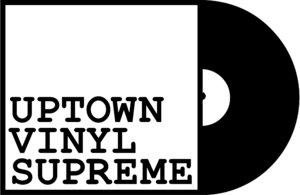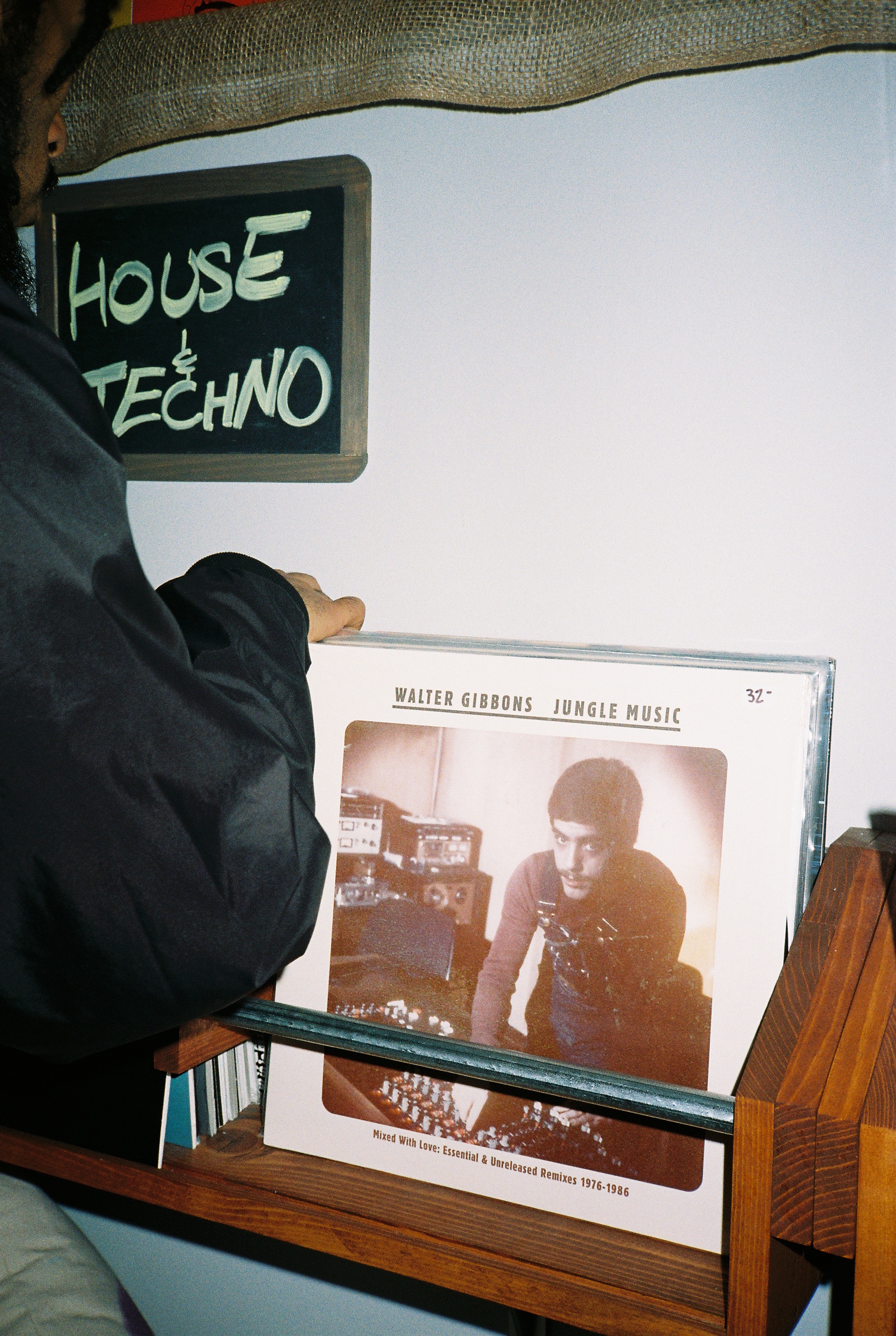Cinderblock Mentality
America’s got some pretty big elephants in its room. And not until the 2016 election of its 45th president, coupled with social media and the interconnected timelines of the millions of American thoughts that come with it, have those elephants been so publicly expressed. Deep seated issues regarding racial, social, gender and economic inequality have all been (and continue to) be posted, hash-tagged, retweeted, and pointed out for many to consider.
Albeit a great thing, the very same technology that provides a platform for voices against oppression, is also offering Americans easy access to an online universe of streamlined and armchair EVERYTHING. Anything—from tonight’s dinner ingredients, tomorrow’s outfit, next week’s furniture, and even next month's car—is readily available to purchase and deliver at a moment’s notice. All without the need for any interpersonal, human exchange. It’s so convenient that it’s scary. Scary enough to inspire some of us, like Emily and Pat of the newly-opened Cinderblock People record shop in Harlem, to swim against the digital current and look to analog philosophy to help remedy some of the modern madness.
Just a few weeks back the shop hosted an in-store event that featured a musical lineup of local DJs and producers. The gathering brewed into an informal meet-and-greet between performers, neighbors, friends of the shop, and even the hosts themselves who were kind enough to share some time and words with us. The result was an intimate conversation about topics like the day’s event, the meaning behind their name, how anxiety about the current presidency became a catalyst for their new space, and more.
UVS:
How did the idea for Cinderblock People the record shop first come about? When did you open?
PAT:
We started this project very close to post-inauguration of The Clown [Donald Trump]. We’ve been officially open since August 2017.
EMILY:
Things were so frustrating and we agreed that we couldn’t just keep sitting on the couch talking without doing anything about it. So we started to think about what was tangible, connected to community, and able to allow us to let out all of the nervous energy that was building.
UVS:
Were you doing any music-related things before the physical shop?
PAT:
We’ve done a few rooftop parties and we’ve released cassettes, so there have been a few on and off incarnations. Cinderblock People actually formed in 2011 when we threw a rooftop film and music event. We wanted to create a series where we would show a documentary film and then have a DJ afterwards. The first one was a film about Dub music in Jamaica followed by a modern-day Dub Techno set. The idea was to build the link between Jamaica and Detroit and Chicago. Though we wanted to do it again, that was the only one. But since then we managed to release two cassettes under the Cinderblock People label.
UVS:
Is the Cinderblock People label working on anything now?
PAT:
We’re working on a new cassette now that is set to come out during the first quarter of 2018. It’s about putting out something physical, but also giving people the option to download it with a code if you don’t have a cassette player.
EMILY:
Well we [do] want people to get cassette players and buy cassettes!
PAT:
[Laughs]
EMILY:
Because it’s something tangible. It’s not something just on your phone that loses touch with the artist and what goes into making an album. Cassettes are small, they also look cool and there’s no reason why you can’t find yourself a tape deck. I also have a real nostalgia for them, they were the first medium for me as a kid. I remember having a Beatles album and listening to it on my walkman. It feels like getting back to something really pure.
UVS:
In terms of meaning and aesthetic, who is/are Cinderblock People?
PAT:
The logo is based on a hallucination! The name comes from the feeling of being surrounded by all these tall buildings, bricks, and cinderblocks. It’s an embracing of the city and having to commute and to relate to all kinds of different people. Because we’re all in this together.
UVS:
And for the shop, why Harlem?
PAT:
There’s a few things that went into that. My family comes from living in Brooklyn and I really wanted to do something different. Emily and I have lived Uptown for about 10 years now bouncing around and it was always a trek down to the Lower East Side or all the way to Brooklyn to dig for records. So it’s like, why not up here?
EMILY:
There are no record stores this far north and there should be.
PAT:
It’s also a bit of a backlash against Brooklyn, like why should it all be happening there?
EMILY:
We love being here and to have more of a reason for staying here, why not put in more places for people to go to?
UVS:
It feels like you definitely have the energy and flavor of a great record shop. Now in terms of business and the day-to-day what would you say the most difficult part about it is?
PAT:
The hard part is the mechanics of running a business in New York, and running a small business that requires people to get out of their homes. It’s bewildering to see another ad for a food delivery service or meal-prep business. There will be 17 Amazon boxes in the building lobby when we get home… We are trying to fight that.
We don’t want a city of tumbleweeds and drones dropping off packages. Where are we going with this delivery now, pants later mentality? Put on your goddamn pants and head out to the record store!
EMILY:
Just getting people out is the tough part.
UVS:
How do you work with or challenge that?
PAT:
It’s about being resilient, staying positive, and offering people an experience like this event.
UVS:
It’s good to see overt homage and tribute to the local culture and history of the area in your shop. Tell us a bit more about that.
EMILY:
It would be completely irresponsible to have a shop in Harlem and not pay any attention to the history and current events going on here. That's always been very important to us and our personal lives. There are so many people that are hurting and so many social problems to recognize and address.
I majored in sociology and I’m always looking for trends within culture. Having a shop means having a mouthpiece and a place where people get together to educate and be educated.
PAT:
You can’t ignore the musical history. There are people that have come around and have said “Yo, this is me on this album!” It’ll be an engineer or musician and they like that we’re keeping those connections intact and celebrating this art.
One of our longtime and local friends, who contributes to the shop, also makes sure we're on it, paying attention, and not just looking at things from a white bubble.
UVS:
How is the music selected and organized in the shop?
PAT:
We have a small store and it’s really focused. There’s not much rock or classical. I do like those genres, but I feel like what we have to offer here is more about sounds that I love and that are interconnected with the area and New York City at large. I see a narrative between all of these genres Soul, Jazz, Dub, Reggae, House, Techno, and Hip Hop.
UVS:
What music would you recommend for shop visitors to check out right now?
PAT:
Walter Gibbons. He is essentially the Kool Herc of Dance music in that he extended the disco breaks in his sets and remixes pushing forward house music in the same way that Herc did for Hip Hop. Jungle Music: Mixed With Love is a compilation of his edits and some collaborations that he did with Arthur Russell previously only on CD, now released this year on vinyl.
Visitors should also check out Jlin’s Black Origami, it’s a hyper-kinetic percussive scorcher. It’s a fascinating album that disassembles her Chicago hometown’s footwork roots into something more experimental and challenging. We saw her play live this summer and it was such an intense energy, unlike anything else we’ve seen this year.
EMILY:
Purple Tape Pedigree!
PAT:
Yes, fellow New Yorker, Geng, and his label release some really far out stuff that bridges Hip Hop and Bass music with these artificial and innately digital sounds. Geng actually came through and played a set here with just two Tascam four tracks for Cassette Store Day.
UVS:
Any last shoutouts or words that you’d like to share with readers?
PAT:
People need to let go of this idea that convenience is going to solve the missing piece in their life. One device is not supposed to do everything. Embrace the option that is a little more difficult or route that is a bit further out of your way because it may have some great rewards – like an artist or album that Spotify couldn’t have recommended based on past songs played. Do it: put your pants on, get the fuck out of the apartment, and meet other people! We can all learn from each other.
[Local producer and musician Chazmere steps out of the record shop]
UVS:
Hey, can you tell us a bit about what just went down in the shop and how you got involved?
CHAZMERE:
I live in the neighborhood and ride my bike a lot. I had seen the shop and I just rolled up. One of the first times that I came in here I had my MPC and sampled a record for a beat that I made live. I also came back tonight for the show and played some beats off of my upcoming project titled Felt.
UVS:
Nice! Will you be pressing any vinyl or cassettes of it?
CHAZMERE:
I think I’m going to definitely put out some cassettes of it. It’s a very transitional piece with a lot of emotional value so I want to ensure that it gets pressed so that it’s something that people can experience in its entirety.
EMILY:
[Cheers]








